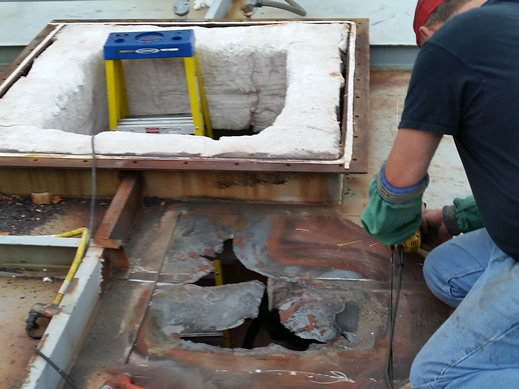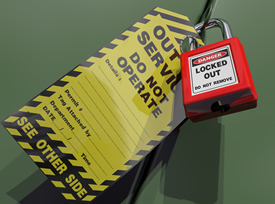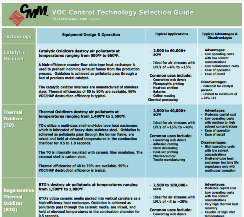Regenerative Thermal Oxidizers (RTO) achieve high destruction efficiency at a lower operating cost compared to other oxidation technologies. In order to maintain both the high destruction efficiency and high thermal efficiency of an RTO, regular maintenance is required. RTOs rely on key components like heat exchange media, internal insulation, valves to divert airflow, thermocouples and supplemental energy for temperature control, and exhaust fans. Each component within an RTO is key to the overall health of the system. Regular maintenance ensures that an RTO will continue to operate within the designed criteria of the system.
Historically, manufacturing companies relied on reactive maintenance; when a part broke, it was replaced. This mode of thinking causes unnecessary downtime and expenses. Preventive maintenance replaced the reactive maintenance mode; scheduled maintenance is used to reduce downtime and results in less costly repairs. The current trend is a shift towards predictive maintenance.
Predictive Maintenance of an RTO
Predictive maintenance for an RTO uses technology to monitor the ongoing performance of the system with an eye towards the overall health for the RTO. Some of the key advantages of this mode of maintenance include:
- Reduced Downtime – using data to identify a failing component before it causes downtime
- Optimized Performance – data collected can allow for alterations to machine operation to further improve operational costs
- Reduced Maintenance Costs – replacing a trouble component before it causes other damage to the system reduces overall maintenance costs.
- Extended Lifespan of Equipment – identifying an issue in the RTO before an actual failure can reduce component failures and extend overall system lifespan
- Maintaining Compliance with Regulations – A properly operating RTO is critical for manufacturers to meet environmental regulations. Data collection can be used to ensure the RTO is operating within designed parameters


The Importance of RTO Maintenance
Due to high operating temperature and exposure to corrosive chemicals, minor issues in an RTO can manifest into major problems that could bring the entire manufacturing plant to a halt if they are not discovered and dealt with in a timely manner.
Benefits of a Consistent Maintenance Plan:
- Ensures components are functioning optimally
- Prevents buildup of particulate matter, impacting air flow
- Prevents unplanned downtime and lost production time
- Simple repairs now could avoid more costly repairs later
The CMM Group offers fast response for conducting a system inspection. Our multi-disciplined technicians can perform an inspection of your oxidizer of any type, checking for insulation damage, valve and burner systems, fans and motors performance.
Common Issues and Points of Failure:
- Media failure: if the burner is out of adjustment, the flame can come into contact with the media and cause damage. In addition, silicon compounds can turn into silicon dioxide in the combustion chamber and cause plugging.
- Insulation failure: Areas around the burner are common points of insulation failure. In extreme cases, heat can burn a hole through the shell and cause a catastrophic failure.
- Cold face support failure: the cold face support system needs to hold up thousands of pounds of delicate ceramic media while tolerating high temperatures and various chemicals emitted in the process.
- Switching valve failure: Switching valves are the primary components that contribute to an RTO’s destruction rate efficiency. Such a failure can impact the destruction rate and affect compliance with environmental regulations.
Key Activities to Cover in an RTO Maintenance Inspection:
- Look for gaps between the structured blocks and insulation which can allow the extreme heat to reach the cold face support and cause excessive heat damage.
- Collect data across the emissions control process and use predictive analysis to measure media bed pressure drops and temperature profiles to identify areas that require attention.
- Inspect the cold face support for signs of structural deterioration, condensation buildup and media plugging.
- Conduct weekly inspections of the RTO exterior. Heat marks, warped steel, damaged fasteners and discolorations could be signs of insulation failure.
- Look for warped or torn metals and plugging in the cold face support, which could be signs of severe cold support failures.
- Conduct regular visual inspections of switching valves for excessive wear and tear or alignment issues.
Download Printable Flyer
Download a printable flyer here.
DOWNLOAD FLYERFor Emergency Service and Parts, Call +1 (920) 336-9800
For more information on RTO Maintenance, contact us.
REQUEST A QUOTE



